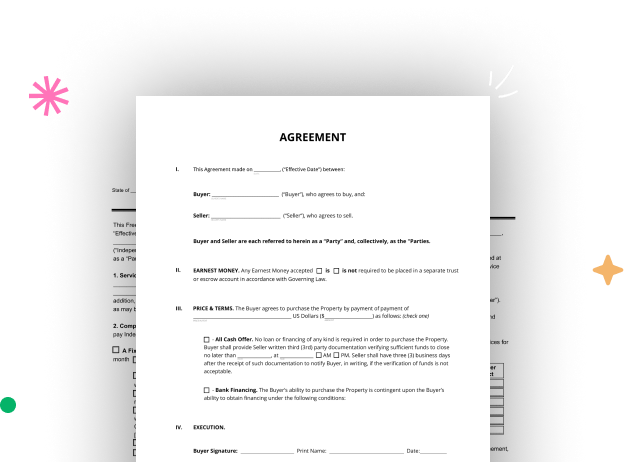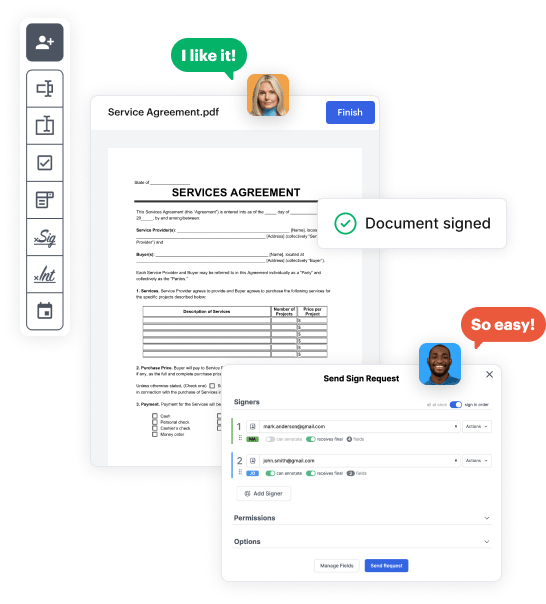

First, log in to your DocHub account. If you don't have one, you can easily sign up for free.
Once logged in, access your dashboard. This is your central hub for all document-based operations.
In your dashboard, click on New Document in the upper left corner. Choose Create Blank Document to craft the Louisiana Estate Planning from a blank slate.
Add different fields like text boxes, photos, signature fields, and other options to your template and designate these fields to particular individuals as needed.
Refine your document by incorporating instructions or any other essential tips utilizing the text option.
Carefully check your created Louisiana Estate Planning for any discrepancies or essential adjustments. Utilize DocHub's editing features to enhance your template.
After finalizing, save your copy. You may choose to retain it within DocHub, export it to various storage options, or forward it via a link or email.